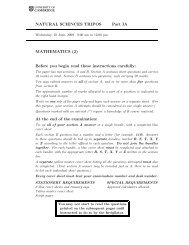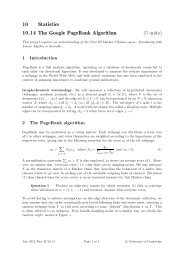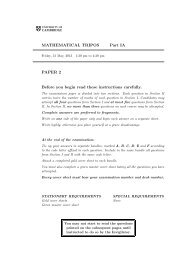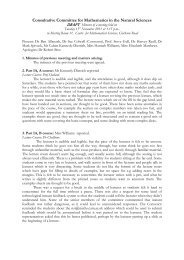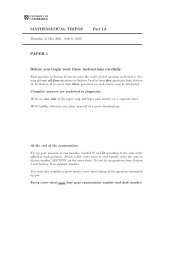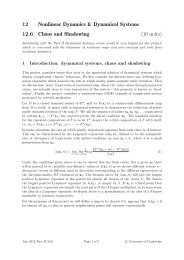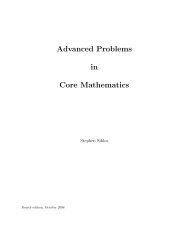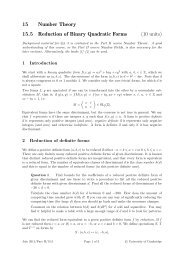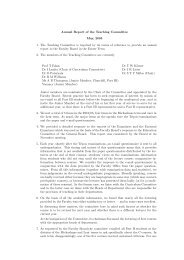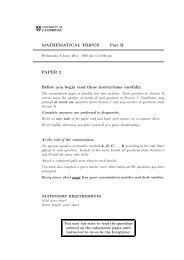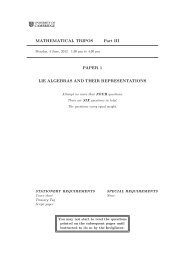MATHEMATICAL TRIPOS Part II PAPER 3 Before you begin read ...
MATHEMATICAL TRIPOS Part II PAPER 3 Before you begin read ...
MATHEMATICAL TRIPOS Part II PAPER 3 Before you begin read ...
- No tags were found...
You also want an ePaper? Increase the reach of your titles
YUMPU automatically turns print PDFs into web optimized ePapers that Google loves.
1934D Applications of Quantum MechanicsWrite down the classical Hamiltonian for a particle of mass m, electric charge −eand momentum p moving in the background of an electromagnetic field with vector andscalar potentials A(x, t) and φ(x, t).Consider the case of a constant uniform magnetic field, B = (0, 0, B) and E = 0.Working in the gauge with A = (−By, 0, 0) and φ = 0, show that Hamilton’s equations,ẋ = ∂H∂p ,ṗ = −∂H ∂x ,admit solutions corresponding to circular motion in the x-y plane with angular frequencyω B = eB/m.Show that, in the same gauge, the coordinates (x 0 , y 0 , 0) of the centre of the circleare related to the instantaneous position x = (x, y, z) and momentum p = (p x , p y , p z ) ofthe particle byx 0 = x − p yeB ,y 0 = p xeB . (1)Write down the quantum Hamiltonian Ĥ for the system. In the case of a uniformconstant magnetic field discussed above, find the allowed energy levels. Working inthe gauge specified above, write down quantum operators corresponding to the classicalquantities x 0 and y 0 defined in (1) above and show that they are conserved.[In this question <strong>you</strong> may use without derivation any facts relating to the energyspectrum of the quantum harmonic oscillator provided they are stated clearly.]<strong>Part</strong> <strong>II</strong>, Paper 3[TURN OVER



